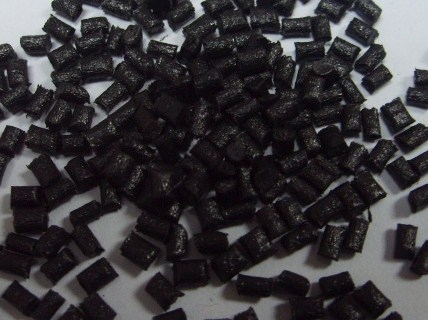Why PBT engineering plastics have poor heat hydrolysis resistance and Solutions
In the chemical industry, rubber and plastic industry, polyester is one of the commonly used rubber and plastic materials; And no matter what aspect of application, the functional requirements of rubber and plastic materials are very high. Compared with general materials, rubber and plastic engineering materials are also called high functional materials; However, most functional polyesters (PBT) have a problem of poor heat resistance and hydrolysis, which restricts it from being selected and used by more users.
From the chemical point of view, the main factor affecting the heat-resistant hydrolysis of polyester (PBT) is the concentration of carboxyl end group in the chemical composition of polyester, and there is ester bond in the carboxyl end group. When the polyester (PBT) is placed in water at a temperature higher than its glass transition temperature, ester bond cracking will occur. The acid environment formed by hydrolysis will accelerate the hydrolysis reaction of polyester (PBT), and its function will decline sharply. The following engineering plastics online will analyze two methods that can deal with poor heat-resistant hydrolysis of polyester (PBT):

Method / process 1
At the top of the list, adding hydrolysis stabilizers such as carbodiimide in water with polyester (PBT) will consume the carboxyl group generated by hydrolysis, slow down the acid hydrolysis rate of polyester (PBT) and advance the hydrolysis resistance of polyester (PBT) resin.
2
Second, by increasing the method of closing the carboxyl group at the end of polyester (PBT), the concentration of carboxyl group at the end is reduced, so as to advance the hydrolysis resistance of PBT. For example, participating in the additives with epoxide functional groups (such as sag Series), the functional group GMA reacts with the carboxyl group at the end of PBT to block the end, and then advance the hydrolysis resistance of PBT.
Article source: PBT engineering plastics http://xrtsm.com.cn/
-
04-13
PVC Engineering Plastics: how PVC plastic pipes are formed
The forming process of PVC plastic pipes should start from the raw materials of PVC plastic granules, which can be divided into soft PVC and hard PVC according to the added amount of stabilizer, plast
-
11-12
What is the filling property of Jiangmen engineering plastics
What is the filling property of Jiangmen engineering plasticsIn recent years, PC modified plastics have developed rapidly in China, and its industrial system is gradually established and improved. Th
-
10-08
Jiangmen Engineering Plastics: how to classify Jiangmen engineering plastics?
How to classify Jiangmen engineering plastics? 1. Classification by application characteristicsAccording to the different application characteristics of famous plastics, plastics are usually divided
-
08-30
Application scope of PBT engineering plastics
PBT engineering plastics are widely used in electronics, car industry, office machinery and other fields. In Japan and the developed countries in Europe, PBT engineering plastics are mainly used in t